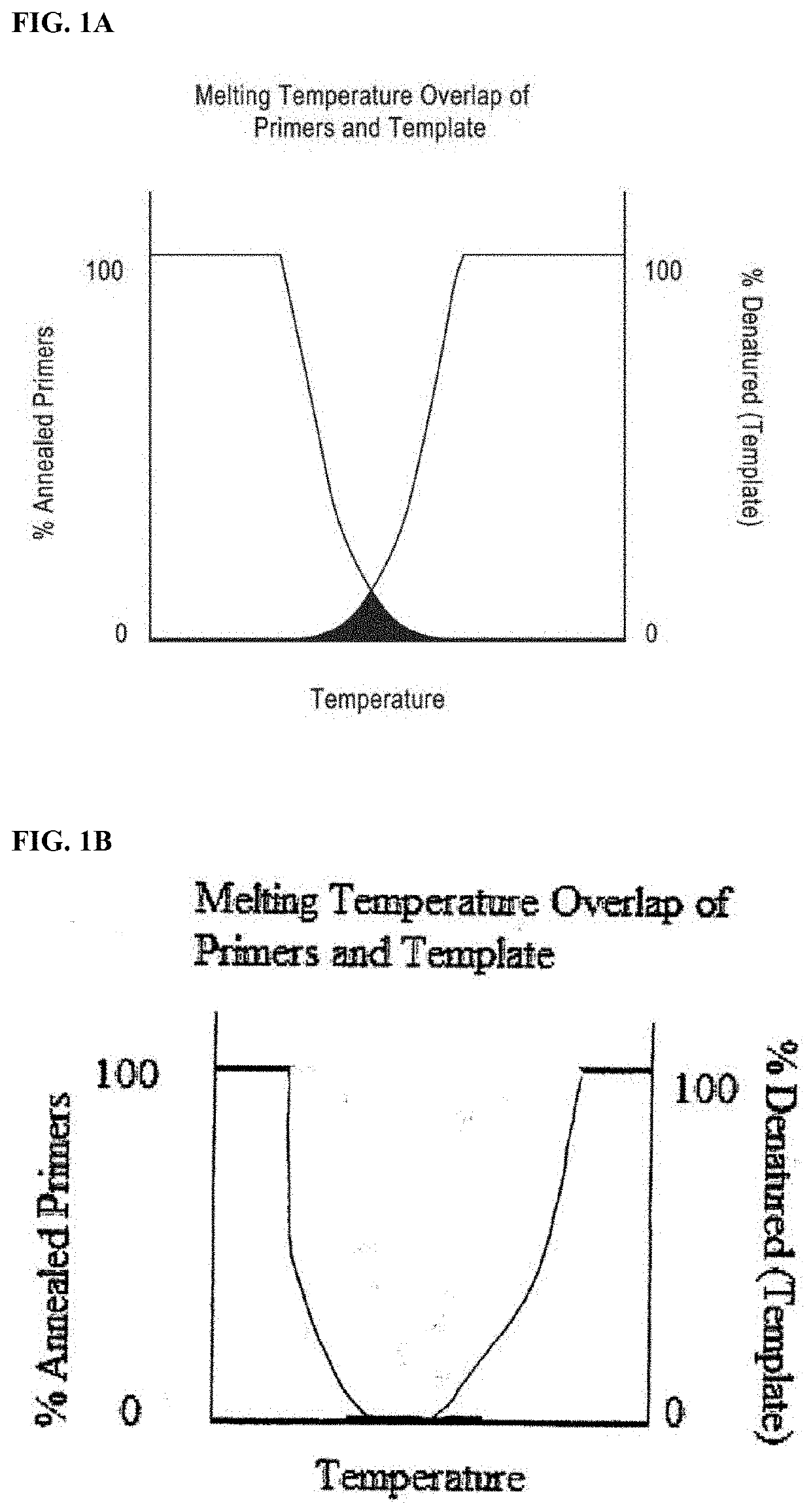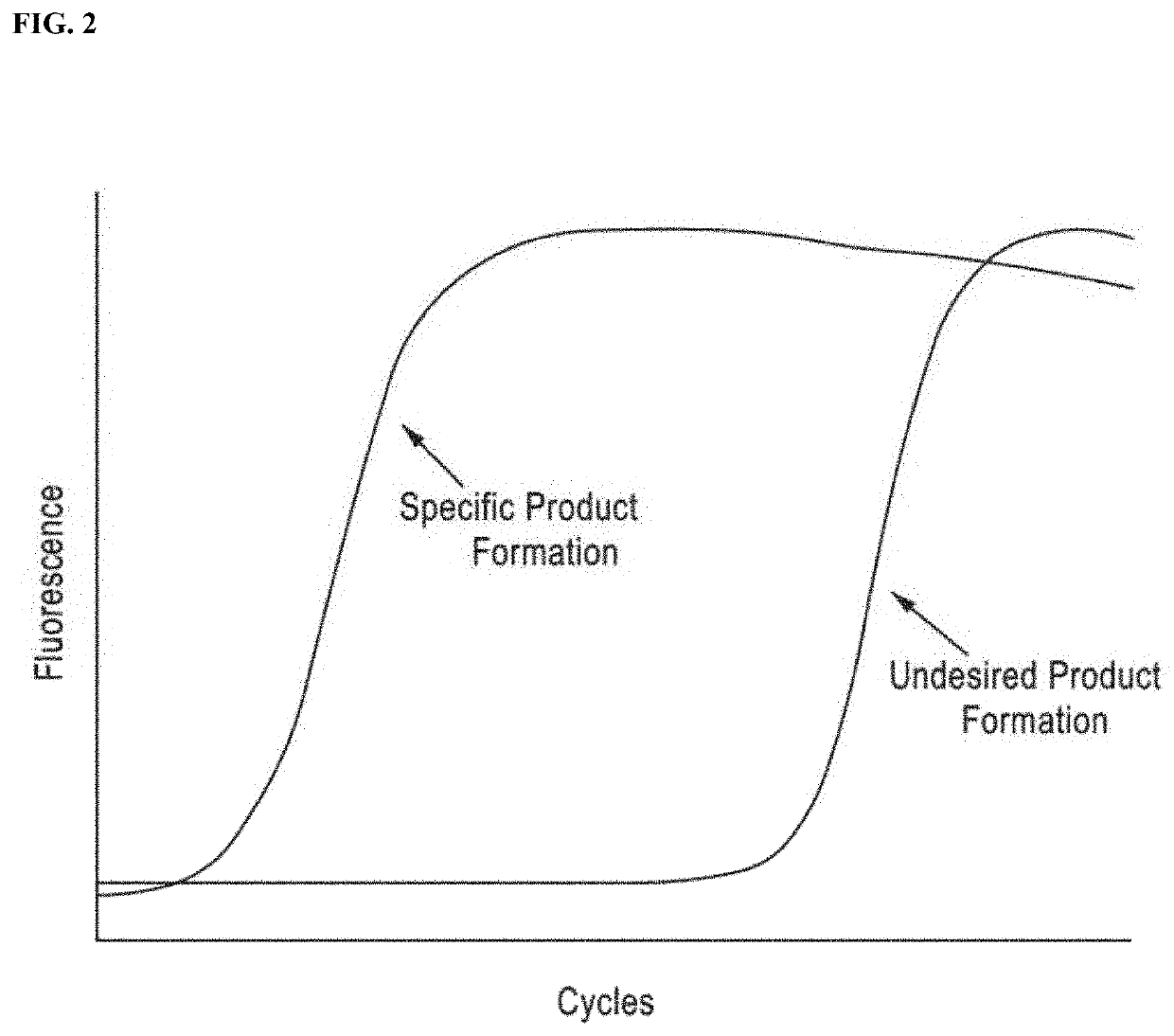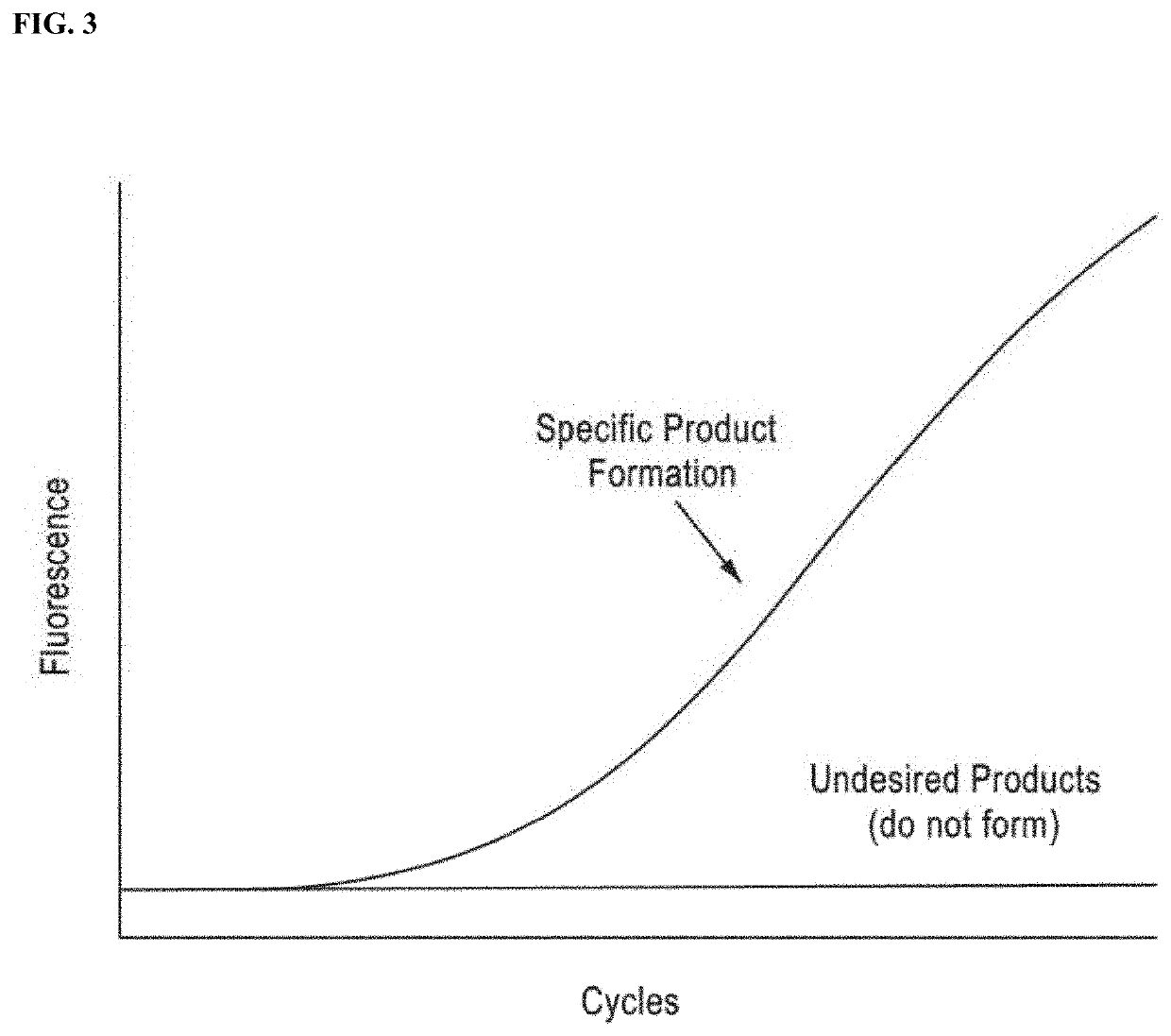DNA amplification technology
- Summary
- Abstract
- Description
- Claims
- Application Information
AI Technical Summary
Benefits of technology
Problems solved by technology
Method used
Image
Examples
example 1
Amplification of a Target Sequence using Primers with Tags
[0341]The following primers were created to be used in conjunction with DFA to amplify a target sequence.
Salmonella FORw / otag (SEQ ID NO: 12):CGACGACCCTTCTTTTTCCTCAATACTGAGCGGCTG, Tm 75.8° C.@ 4 mM Mg and 0.5 μM primerSalmonella REVw / otag (SEQ ID NO: 13):CGCTGCCGGTATTTGTTATTTTATCGGTGGTTTTAAGCGTACTCTTCTATTTTAAATTCC, Tm 75.2° C. @ 4 mM Mg and 0.5 μMprimerSalmonella FORw / tag (SEQ ID NO: 14):CGTCGCGACGACCCTTCTTTTTCCTCAATACTGAGCGGCTG, tag isunderlinedSalmonella REVw / tag (SEQ ID NO: 15):CAGCGCGCTGCCGGTATTTGTTATTTTATCGGTGGTTTTAAGCGTACTCTTCTATTTTAAATTCC, tag is underlinedTarget for first primer binding (SEQ ID NO: 16):CGACGACCCTTCTTTTTCCTCAATACTGAGCGGCTGCTCGCCTTTGCTGGTTTTAGGTTTGGCGGCGCTACGTTTTGCTTCACGGAATTTAAAATAGAAGAGTACGCTTAAAACCACCGATAAAATAACAAATACCGGCAGCG, 86.5°C. @ 4 mM MgAnnealing temperature for after first extension:ACCCTTCTTTTTCCTCAATACTGAGCGGCTG (SEQ ID NO: 17),73.3° C.CCGGTATTTGTTATTTTATCGGTGGTTTTAAGCGTACTCTTCTATTTTAAATTCC...
example 2
Amplification of a Target Sequence using Primers with Tags that Form G-Quadruplexes
[0342]The following is an example of potential G-quadruplex used in maintaining the DFA amplification bubble, and serving to block extension beyond the bubble.
[0343]Mycobacterium avium subsp. paratuberculosis str. k10, complete genome, Sequence ID: gb|AE016958.1|
(SEQ ID NO: 21):5′-TCGAATCCCTCTCCCCGCCCGGGCGGTACGACGCGCCGAGGAAGCGGTGCACCAGGGCGCGCTCGGCGGCCGGGTCCTTGAGCGGCCAGCCCCATAACGCCAGGAAGACGCGGATCAGCCACTGCGCCGCCAGCGGGTCGTCGTGGCCGGGCCCGAGCATCTCGGCGGCCAGGGCCGTCA-3′(SEQ ID NO: 22):5′-TACCGCCCGGGCCCGGGCGGTACGACGCGCCGA-3′(SEQ ID NO: 23):5′-GGCCGGGCCCGGGCCCGGCCACGACGACCCGCT-3′
[0344]FIG. 18 shows the hybridization of the above primers to the Mycobacterium avium sequence to form G-quadruplex structures to block extension beyond the bubble.
example 3
Temperature Dependent Multiplexing of Target and Control Sequences
[0345]A multi-temperature protocol is followed for development of an internal control for amplification of a Mycobacterial target. In this case, the control amplicon has similar thermal cycling properties to the target amplicon, 94° C. for denaturation and 84° C. for annealing / extension. However, the primers (Mfo1275fmut2, Mfo1490rmut2) have introduced nucleotide mismatches such that the predicted Tm for the target DNA, a Mycobacterium fortuitum sequence (Mfo template), is 7 to 12×109 copies of control template are quiescent during the initial 80 cycles, and are then activated and amplified by the second stage of thermal cycling with a Ct of about 40 cycles.
[0346]The thermal cycling conditions are: 95° C.-84° C.×80 cycles, 93° C. −72° C.×5 cycles to catch, 93° C. −77° C. ×40 cycles.
[0347]The input is 1×109, 1×107 copies M. fortuitum synthetic template.
[0348]Method: introduce mutations that lower initial Tm and return ...
PUM
| Property | Measurement | Unit |
|---|---|---|
| Temperature | aaaaa | aaaaa |
| Temperature | aaaaa | aaaaa |
| Temperature | aaaaa | aaaaa |
Abstract
Description
Claims
Application Information
 Login to View More
Login to View More - R&D
- Intellectual Property
- Life Sciences
- Materials
- Tech Scout
- Unparalleled Data Quality
- Higher Quality Content
- 60% Fewer Hallucinations
Browse by: Latest US Patents, China's latest patents, Technical Efficacy Thesaurus, Application Domain, Technology Topic, Popular Technical Reports.
© 2025 PatSnap. All rights reserved.Legal|Privacy policy|Modern Slavery Act Transparency Statement|Sitemap|About US| Contact US: help@patsnap.com



